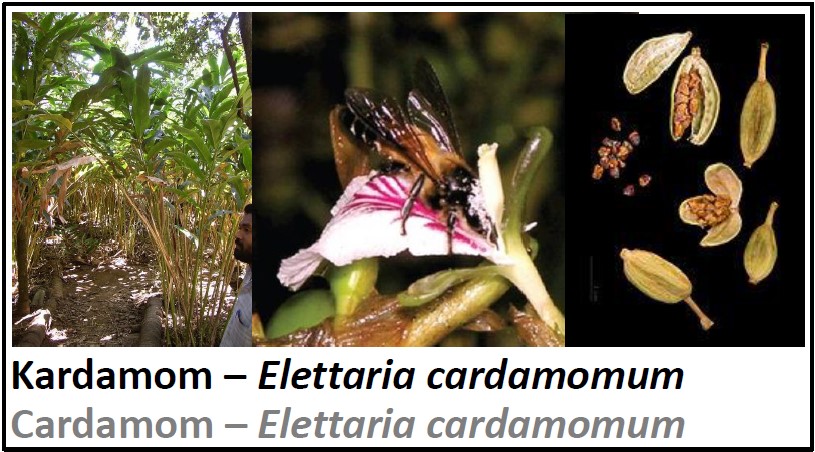Elettaria cardamomum (Green Cardamom)
|
Cardamom comes in two kinds that both belong to the Gingers and are, thus, related to Ginger, Galangal and Turmeric. The Black Cardamom (Ammonum subulatum) is used to spice meat and tastes smoky. It is grown in Bengal and China and not well known in the West. More familiar is the Green Cardamom (Elettaria cardamomum), common used to scent exotic sweets, such as Syrian Bakhlava. In his country of origin, India, it is also used to spice salty food, though. It is the base of the Massalas, the numerous and diverse spice mixtures of India. Alexander the Great met Cardamom during his conquest of India, more than 2300 years ago and brought it to Greece. In contrast to Ginger and Turmeric that are sterile and, therefore, can propagate only by human assistance (by dividing and planting the rhizomes), Cardamom occurs still in the wild, in the Western Ghats, a mountain ridge behind Mumbai. Cardamom is very expensive, after Safran and Vanilla it is the third spice in price. The peculiar taste comes from the monoterpenes cineol (also present in Laurel and Clove) and terpenylacetate. Both show antibacterial, analgetic and mood-lifting activities. From botanical viewpoint, it is a capsuel fruit, but the ovules are not completely enclosed and lie partially free as in the conifers. The green husks are called arillus. Green Cardomom occurs in two subspecies – the precious Malabar and the cheaper Ceylon Cardamom, often used as surrogate. The flower is reduced, only the lower lip is conspicuous, the flower is pollinated by proboscis bees. |

